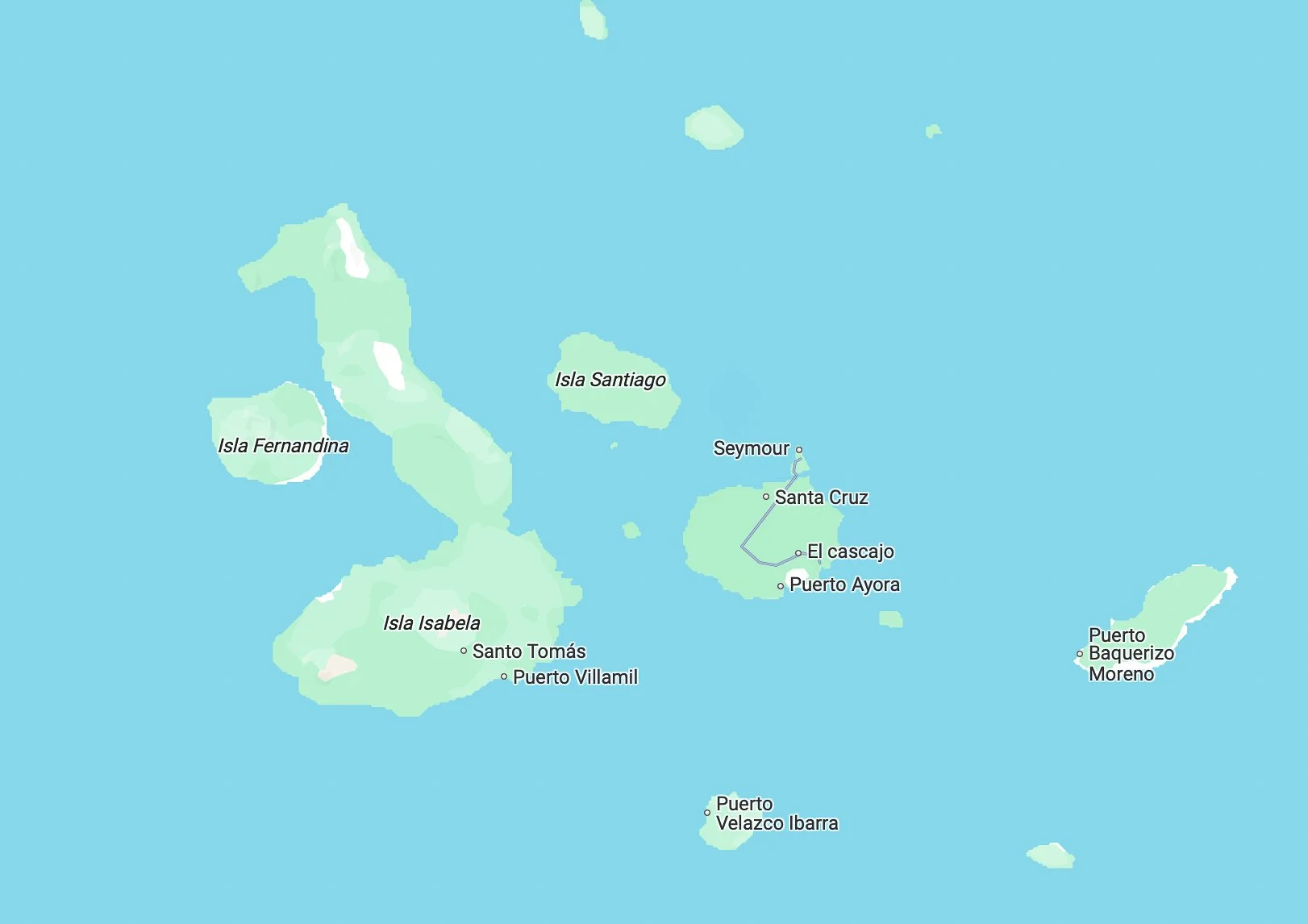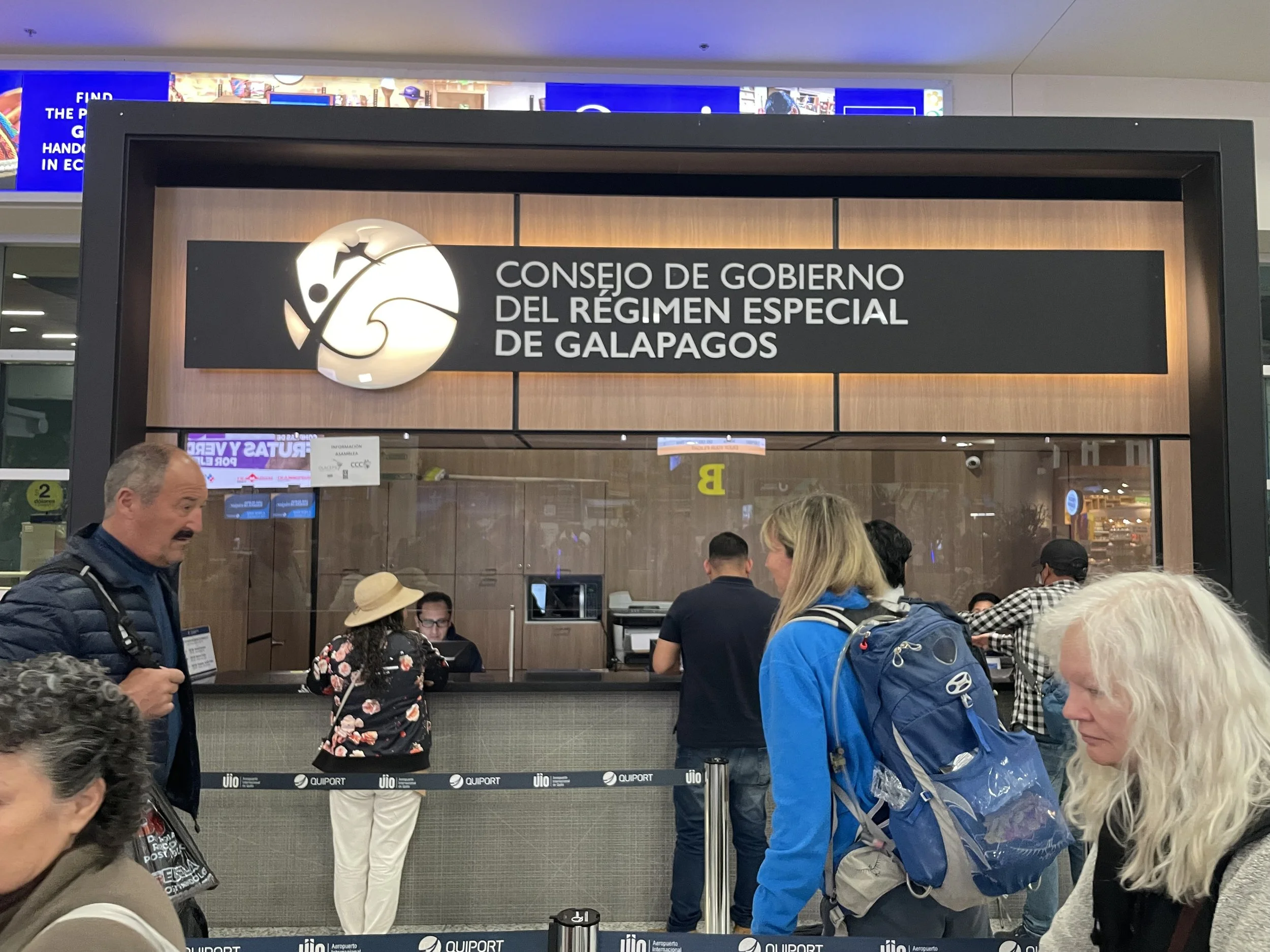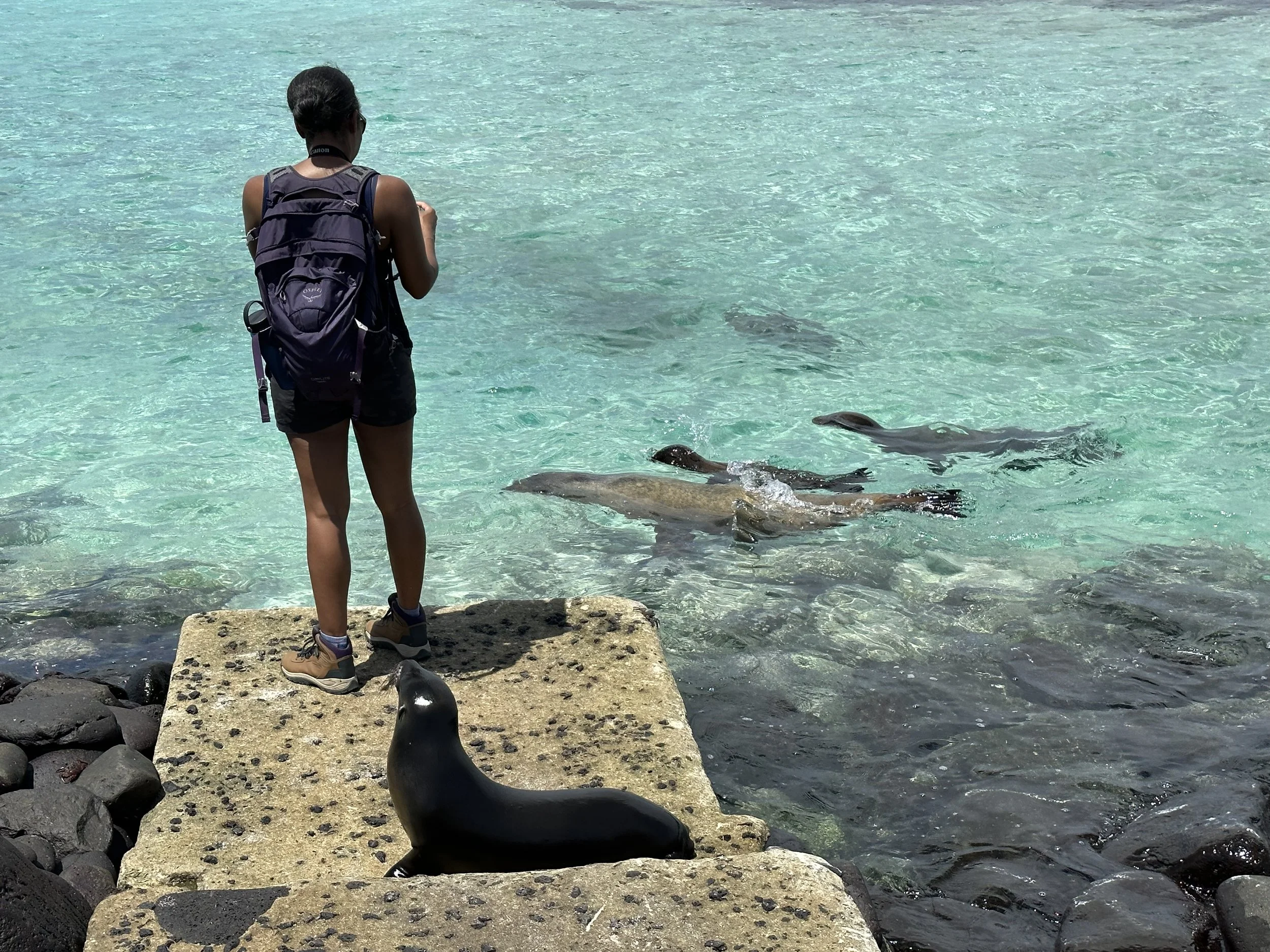Welcome to the Galapagos Islands: Info to Know Before You Go!
Marine Iguana
The Galápagos Islands are an archipelago of volcanic islands located in the Pacific Ocean, approximately 600 miles (1,000 km) off the coast of Ecuador. The islands straddle the equator and are renowned for their incredible biodiversity, much of which inspired Charles Darwin’s theory of evolution. The Galápagos are a bucket-list destination for nature lovers, adventure seekers, and wildlife enthusiasts alike.
Image from Google Maps
The Islands
The Galápagos consist of 13 major islands, 6 smaller islands, and over 100 islets and rocks. Some of the most well-known islands include:
Santa Cruz – The central hub with the largest town, Puerto Ayora.
San Cristóbal – Home to Puerto Baquerizo Moreno, the capital of the Galápagos province.
Isabela – The largest island, known for its volcanic landscapes and abundant wildlife.
Floreana – Famous for its history of whalers and pirates.
Fernandina – The most pristine island, home to the highest concentration of marine iguanas.
Santiago – A great spot for snorkeling and observing fur seals.
Genovesa – A birdwatcher’s paradise, often called "Bird Island."
Inhabited Islands
Although most of the Galápagos is uninhabited, there are four main islands where people live:
Santa Cruz – The most developed, with hotels, restaurants, and the Charles Darwin Research Station.
San Cristóbal – The capital island, offering a mix of nature and small-town life.
Isabela – More remote but increasingly popular with eco-tourists.
Floreana – Home to a small population and a rich pirate history.
Getting There and Entry Requirements
To reach the Galápagos, travelers must first fly to Ecuador (Quito or Guayaquil). From there, domestic flights operate to the islands' two main airports:
Seymour Airport (GPS) on Baltra Island (for Santa Cruz access).
San Cristóbal Airport (SCY) on San Cristóbal Island.
Passport, Visa, and Entry Process
Most travelers entering Ecuador, including the Galápagos, do not need a visa for stays up to 90 days if they are from the U.S., Canada, the EU, and many other countries. However, you do need a passport that is valid for at least 6 months after the date you arrive.
Before traveling to the Galápagos, visitors must:
Obtain a Transit Control Card (TCT) at Quito or Guayaquil airport ($20 per person). This can be obtained at the Consejo De Gobierno Del Regimen Especial De Galapagos (Governing Council of the Special Regime of Galapagos) counter. There is usually a line, so come with your passport, patience, and a payment method.
Show proof of return tickets and hotel or tour reservations.
Pay the Galápagos National Park Entrance Fee ($200 for adults, $100 for children under 12).
Go through an agricultural inspection to ensure no banned items (such as fresh fruits, vegetables, or soil) are being brought to the islands.
Arriving at the Galápagos Airports
Upon arrival, passengers must walk directly off the plane onto the tarmac, as there are no jet bridges. The airports are small and semi-open-air, reflecting the islands' remote and eco-conscious nature. Expect a warm (hot) breeze and a unique first impression of the volcanic landscape.
At customs and immigration, visitors go through a brief luggage check to ensure compliance with conservation regulations. Drug-sniffing dogs and X-ray machines scan bags for restricted items. Once cleared, travelers can proceed to taxis, buses, or ferries to their final destination.
Things to Do in the Galápagos
Wildlife Viewing
Giant Tortoises – Visit the Charles Darwin Research Station (Santa Cruz) or El Chato Reserve.
Marine Iguanas – Best seen in Fernandina, Santa Cruz, and Isabela.
Blue-footed Boobies & Frigatebirds – Common in North Seymour, San Cristóbal, and Genovesa.
Galápagos Penguins – Found on Isabela, Fernandina, and Bartolomé.
Snorkeling & Diving
Kicker Rock (San Cristóbal) – Hammerhead sharks and rays.
Devil’s Crown (Floreana) – Coral reefs and tropical fish.
Gordon Rocks (Santa Cruz) – Advanced divers can see hammerheads and sea turtles.
Wolf & Darwin Islands – Remote sites with the best scuba diving experiences.
Hiking & Exploring Volcanic Landscapes
Sierra Negra Volcano (Isabela Island) – One of the largest active volcanic craters.
Bartolomé Island – Moon-like landscapes and panoramic views.
Lava Tunnels (Santa Cruz & Isabela) – Walk through underground lava formations.
Other Activities
Kayaking & Paddleboarding – Explore Puerto Ayora, Gardner Bay, and Puerto Villamil.
Beach Relaxation – Best beaches include Tortuga Bay (Santa Cruz), Gardner Bay (Española), and Puerto Villamil Beach (Isabela).
Best Time to Visit
December to May (Warm & Wet Season) – Warmer waters, better snorkeling, lush landscapes.
June to November (Cool & Dry Season) – Cooler waters, better for diving, abundant marine life.
Packing Tips
Light clothing, swimsuits, and hiking shoes.
Reef-safe sunscreen and sunglasses.
Motion sickness medication (for boat rides).
Binoculars and an underwater camera.
Health & Safety Considerations
Seasickness is common – Take precautions if traveling between islands.
Medical facilities are limited – Bring necessary medications.
Follow conservation rules – Avoid touching or feeding wildlife.
Cost of Travel
Round-trip flights from Ecuador: appx. $250–$500
National Park Entrance Fee: $200 (adults), $100 (children under 12)
Transit Control Card (TCT): $20 per person
Hotels: Budget from $40/night, luxury from $500/night
Island-hopping tours: $150–$300 per day
Luxury cruises: $2,000–$7,000 per trip
Exploring the Galápagos Independently: Can You Wander Alone?
The Galápagos Islands have strict regulations in place to protect their fragile ecosystem, and these rules extend to how visitors can explore. You can wander freely in certain areas, but many parts of the islands require a certified guide. Here’s what you need to know:
Where You Can Explore Alone
If you’re staying on one of the four inhabited islands (Santa Cruz, San Cristóbal, Isabela, and Floreana), you can explore:
• Towns and villages – You’re free to roam places like Puerto Ayora (Santa Cruz) and Puerto Baquerizo Moreno (San Cristóbal).
• Beaches and designated hiking trails – Some areas are accessible without a guide, such as:
• Tortuga Bay (Santa Cruz) – A stunning white-sand beach.
• La Lobería (San Cristóbal) – A great spot to see sea lions and marine iguanas.
• Concha de Perla (Isabela) – A calm lagoon for snorkeling.
• Highlands of Santa Cruz – Includes the Los Gemelos craters and lava tunnels.
Where You Need a Guide
Many sites, especially those with significant wildlife populations or sensitive environments, require a certified naturalist guide. These include:
• Uninhabited islands (e.g., Bartolomé, North Seymour, Española).
• National Park trails that lead to protected wildlife areas.
• Certain snorkeling/diving spots, like Kicker Rock and Los Tuneles.
If you’re visiting without a guide and attempt to enter a restricted area, park rangers may turn you away or fine you.
Getting Around Without a Tour
If you’re not on a structured tour, you still have several ways to move between and within the islands:
1. Inter-Island Ferries
Ferries run between the inhabited islands and are the primary way independent travelers move between them.
• Routes: Santa Cruz ↔ San Cristóbal / Santa Cruz ↔ Isabela / Santa Cruz ↔ Floreana.
• Cost: ~$30–$40 per trip.
• Schedule: Typically, early morning (~6 AM) and afternoon (~2 PM).
• Duration: 2-2.5 hours depending on the route.
Tip: The rides can be bumpy, so bring motion sickness medication if you’re prone to seasickness.
2. Speedboats & Water Taxis
• Used for shorter trips, such as getting from Puerto Ayora to nearby islets or across harbors.
• Water taxis cost $1–$5 depending on the distance.
3. Small Planes (Inter-Island Flights)
Emetebe Airlines operates small planes connecting San Cristóbal, Isabela, and Baltra.
• Cost: ~$150 per flight.
• Time-Saving Option: A 30-minute flight instead of a 2-hour ferry ride.
4. Renting Bikes, Scooters, or Walking
• Many areas on Santa Cruz and San Cristóbal can be explored by bike or scooter (rentals from $10–$20 per day).
• Walking is an easy way to explore town areas and nearby beaches.
For up to date information visit galapagos.gob.ec. Keep in mind the site is in Spanish so a translate app may be needed.





